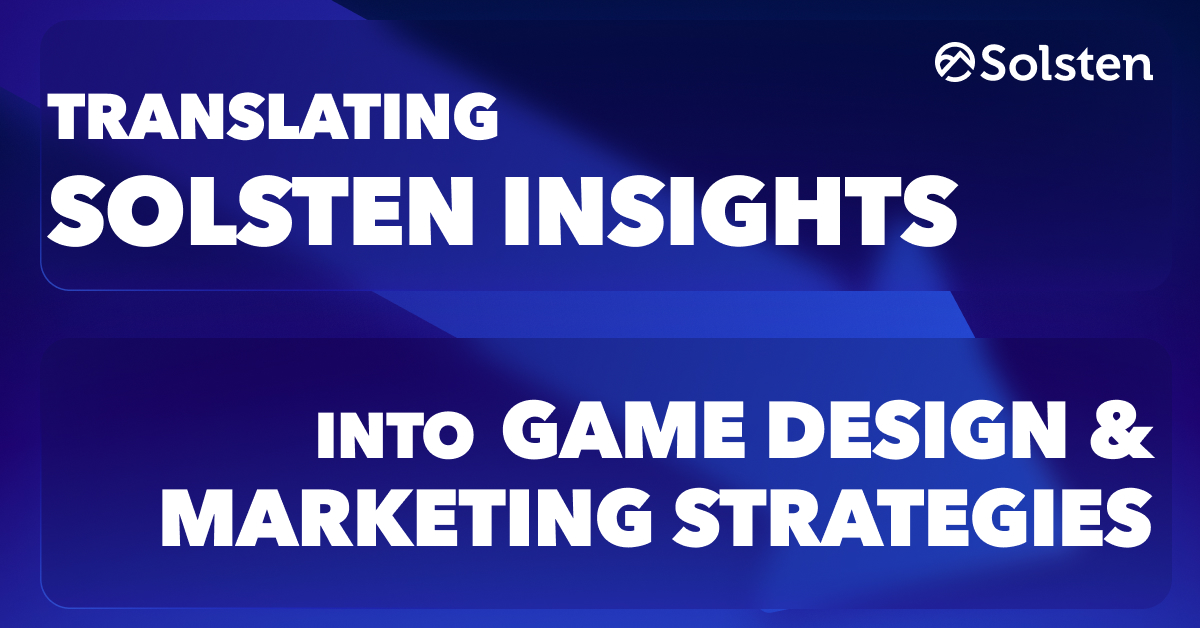Solsten’s platform provides deep psychological insights into player behavior, preferences, and motivations. But how do you transform these insights into actionable game design and marketing strategies? This article will guide you through the process of using Solsten’s data to create more engaging games and more effective marketing campaigns.
The Power of Psychological Insights in Gaming
Solsten’s approach goes beyond traditional analytics by focusing on the psychological traits that determine player behavior. Solsten has developed a patented system for assessing human cognition at scale, providing a previously unobtainable understanding of player psychology. These deep insights allow developers to create games that resonate more strongly with their audience, leading to higher engagement, better retention, and increased player satisfaction.
Optimize Marketing Creatives
Solsten’s insights can dramatically improve the effectiveness of your marketing efforts. Here’s how:
- Align Creative Elements with Traits: Use Solsten’s detailed trait data to create hyper-targeted visual narratives. For example, if your audience scores high on “difficult tasks,” design ads that stress gaming experiences that are puzzle-like and require extra effort and brain power, dramatically increasing click-through rates.
- Create Messaging that Resonates: Use Solsten’s psychological player personas to create emotionally resonant ad copy. For a group high in “achievement,” build a narrative of progression and mastery, which has a high probability of boosting conversion.
- A/B Testing Framework: Develop a sophisticated multi-variate testing model based on Solsten’s psychological personas. This allows for testing dozens of creative variations simultaneously, each tailored to specific psychological personas, which has a high probability of increasing ad effectiveness.
Enhance User Acquisition and Conversion
Solsten’s psychological personas can significantly improve your user acquisition strategies:
- Target Based on Psychographic Personas: Use Solsten’s AI-driven look-alike modeling to identify players psychologically similar to your top 1% of users, which can significantly reduce CAC.
- Craft Tailored User Acquisition Funnels: Design psychologically-optimized user journeys from first ad impression to first in-app action, which can increase funnel conversion rates.
- Optimize App Store Presence: Use Solsten’s trait analysis to create multiple app store listings, each tailored to different psychological profiles. This personalized approach can have a big impact on install rates.
- Measure Conversion Rates: Implement advanced cohort analysis based on psychological personas, allowing for precise optimization of acquisition strategies. This granular approach could lead to a 2-3x improvement in LTV:CAC ratio.
Design for Player Motivations
Understanding player motivations is key to creating engaging gameplay loops:
- Identify Core Motivations: Use Solsten’s multi-dimensional motivation mapping to create a comprehensive player motivation matrix, allowing for unprecedented precision in game design decisions.
- Create Satisfying Gameplay Loops: Design adaptive gameplay systems that dynamically adjust to individual player motivations in real-time, potentially increasing session length.
- Balance Intrinsic and Extrinsic Motivators: Implement a sophisticated reward system that adapts to each player’s unique motivational profile, potentially boosting retention rates by 30-50%.
- Long-Term Engagement Strategies: Develop AI-driven content generation systems that create personalized challenges and narratives based on individual psychological profiles, extending player lifetimes by months or even years.
Monetization Strategies Aligned with Player Psychology
Effective monetization can make or break a game’s success, and psychological insights can help:
- Understand Purchase Motivations: Use Solsten’s deep psychological insights to create detailed player segments with specific purchase motivations, allowing for highly targeted monetization strategies that could increase ARPPU by 50-100%.
- Design Appealing Offerings: Create a dynamic in-game economy that adapts to individual player values and motivations, potentially increasing conversion to paying users.
- Ethical Considerations: Develop an AI-driven ethical framework that ensures monetization strategies align with player well-being, leading to higher player satisfaction scores and long-term brand loyalty.
- Pricing Strategies: Implement dynamic pricing models based on individual psychological profiles and in-game behavior patterns, potentially increasing overall revenue.
Address Specific Player Interests
Solsten’s comprehensive trait measurement allows you to gauge interest in specific themes or features:
- Evaluate Interest in Themes: Use Solsten’s comprehensive trait measurement to predict player reception to new content themes with 90%+ accuracy, dramatically reducing development risks.
- Incorporate Broader Interests: Use Solsten’s cross-domain psychological profiling to create unexpected but highly engaging game features, potentially leading to viral growth and organic user acquisition.
- Balance Niche and Mass Appeal: Use advanced psychological segmentation to create a core game experience with dynamically adapting elements, allowing a single game to appeal to multiple distinct player groups simultaneously.
Conclusion
Translating Solsten’s psychological insights into effective game design and marketing strategies is a powerful way to create more engaging, successful games. By understanding the deep psychological motivations of your players, you can create experiences that resonate on a fundamental level, driving engagement, retention, and ultimately, success.
Remember, the key to leveraging Solsten’s insights effectively is continuous learning and iteration. As you implement changes based on psychological data, monitor the results, refine your approach, and always keep the player experience at the forefront of your decisions.
In an industry where player expectations are constantly evolving, Solsten’s unique approach to player psychology provides a competitive edge. By embracing these insights and consistently applying them to your game design and marketing strategies, you’re positioning your game for long-term success in an increasingly crowded market.
Schedule a demo today to see how Solsten can help you understand your players’ psychology.


